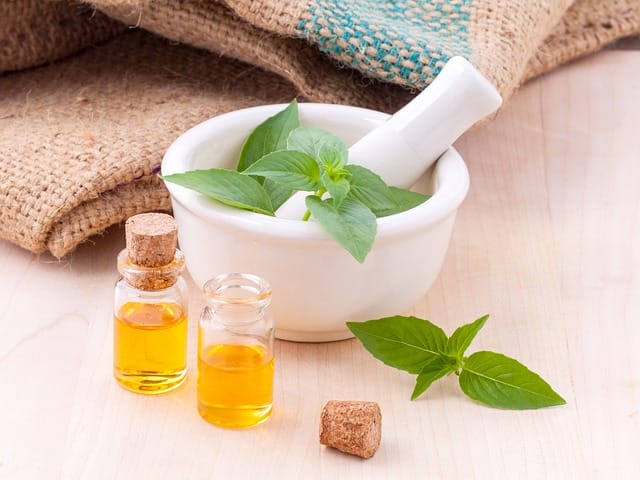How to grow Lemon basil
Welcome to our comprehensive guide on growing lemon basil! In this article, we will provide you with step-by-step instructions to successfully cultivate and care for this aromatic and flavorful herb in your garden

In this article:
Introduction
Welcome to our comprehensive guide on growing lemon basil! In this article, we will provide you with step-by-step instructions to successfully cultivate and care for this aromatic and flavorful herb in your garden. Whether you are a seasoned gardener or new to herb cultivation, this guide will equip you with all the necessary information to enjoy a bountiful harvest of lemon basil.
Overview of Lemon Basil
Lemon basil, also known as Ocimum citriodorum, is a variety of basil that has a citrusy and refreshing lemon-like flavor. It belongs to the mint family and is widely used in culinary dishes, teas, and as a natural insect repellent. This herb is easy to grow, making it a popular choice for both indoor and outdoor gardens.
Planting Lemon Basil
The first step in growing lemon basil is to decide whether you want to start from seeds or purchase young plants from a nursery. If starting from seeds, sow them indoors 6 to 8 weeks before the last frost date in your area. Use seed-starting trays filled with a high-quality seed starting mix. Lightly press the seeds into the soil, cover them with a thin layer of soil, and keep them moist until germination.
Soil Requirements
Lemon basil thrives in well-drained, fertile soil with a pH level between 6.0 and 7.5. Prepare the soil by loosening it with a garden fork or tiller. Remove any weeds or grass from the planting area. Incorporate organic matter such as compost or well-rotted manure into the soil to improve its structure and nutrient content.
Sunlight and Temperature
Lemon basil requires full sun to flourish and produce abundant foliage. Choose a location in your garden that receives at least 6 to 8 hours of direct sunlight each day. The ideal temperature range for lemon basil is between 60°F (15°C) and 80°F (27°C). Protect the plants from frost by covering them or bringing them indoors if necessary.
Watering and Drainage
Proper watering is crucial for lemon basil plants. Keep the soil evenly moist, but not waterlogged. Water deeply when the top inch of soil feels dry. Avoid overhead watering, as it can promote disease. Ensure that the planting area has good drainage to prevent water from pooling around the roots.
Fertilizing
Lemon basil benefits from regular fertilization to support healthy growth. Apply a balanced organic fertilizer once every 6 to 8 weeks or use a slow-release granular fertilizer according to the manufacturer's instructions. Avoid overfertilizing, as it can lead to excessive foliage growth with reduced flavor.
Pruning and Harvesting
To promote bushier growth and prevent the plant from flowering too soon, regularly pinch off the top sets of leaves or use sharp pruning shears to trim the stem tips. This will encourage lateral branching and a more compact habit. Harvest the leaves as needed once the plant reaches a suitable size, typically after 8 to 10 weeks of growth. Cut leaves from the outer parts of the plant, leaving the inner leaves to continue growing.
Common Pests and Diseases
While lemon basil is relatively pest-resistant, it may occasionally face challenges such as aphids, whiteflies, or fungal diseases. Monitor your plants regularly and take prompt action at the first sign of infestation. Use organic insecticidal soaps or neem oil to control pests, and ensure proper air circulation and watering practices to prevent fungal diseases.
Companion Planting
Lemon basil can benefit from companion planting, which involves growing compatible plants near each other to enhance growth, repel pests, or improve flavor. Consider planting it alongside tomatoes, peppers, or marigolds in your garden.
Culinary Uses of Lemon Basil
Lemon basil is a versatile herb that adds a citrusy twist to various culinary creations. Its leaves can be used fresh or dried to infuse soups, salads, sauces, marinades, and beverages with a unique lemony flavor and aroma. Experiment with lemon basil in your favorite recipes to discover new and delicious taste combinations.
Storing and Preserving Lemon Basil
To enjoy lemon basil beyond the growing season, consider preserving it for later use. Harvest the leaves when the plant is at its peak, gently wash and pat dry them, and then freeze them in airtight bags or chop and store them in an ice cube tray with a little water. Another option is to create herb-infused oils by steeping lemon basil leaves in a high-quality olive oil.
Conclusion
Cultivating lemon basil in your garden is a rewarding experience. By following the guidelines outlined in this article, you can create an optimal growing environment for your lemon basil plants, ensuring a steady supply of fresh herbs for your culinary adventures. The citrusy scent and flavor of lemon basil are sure to elevate your recipes and add a delightful twist to your dishes. Enjoy the journey of growing and using your own lemon basil!
